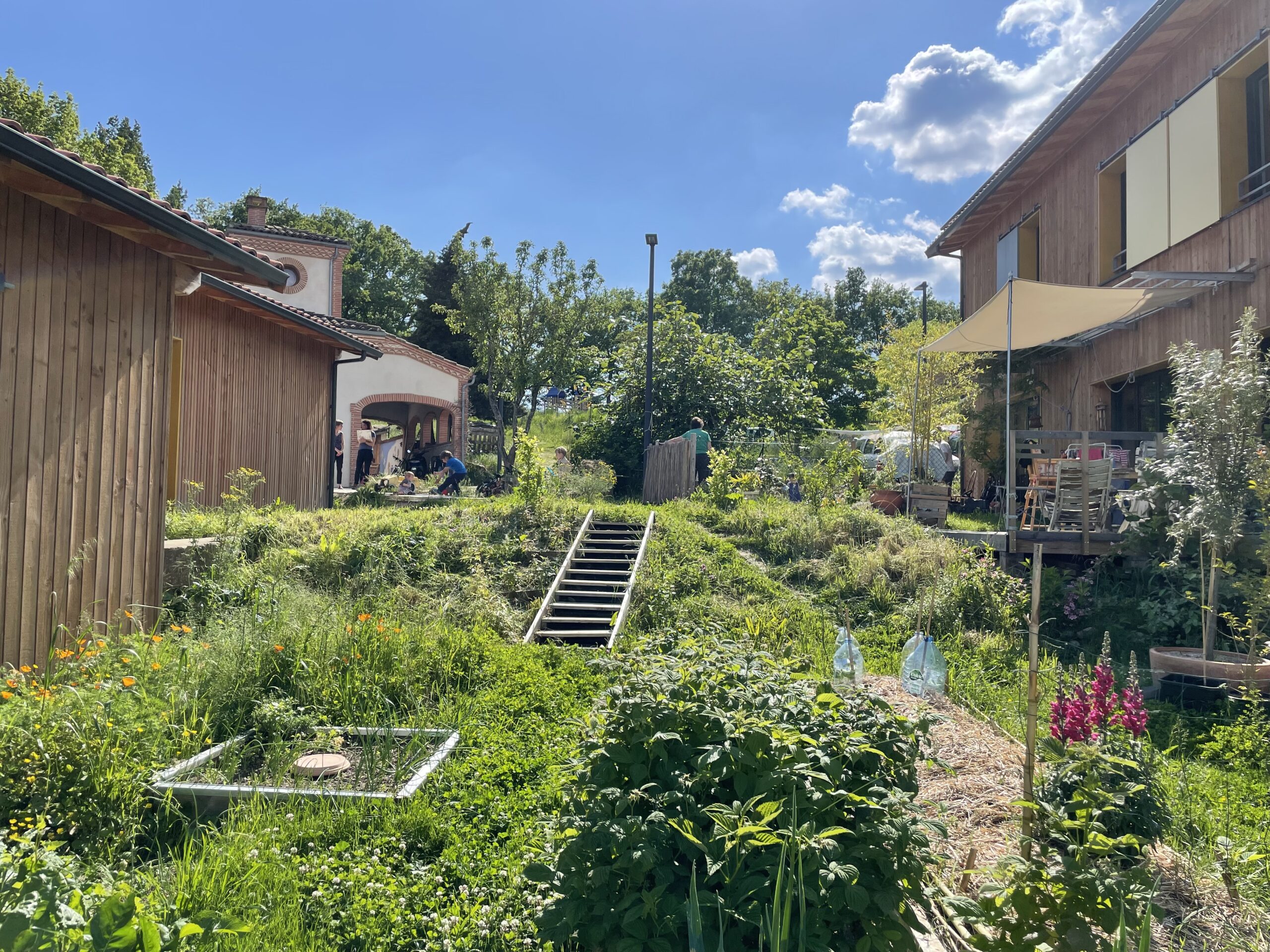
Negative stereotypes about eco-friendly buildings are deep-rooted, outdated and often unfounded. In this article, Pierre Arnold, Programme Manager at World Habitat argues that it’s time to dispel the myths and push innovative, environmentally-friendly construction into the mainstream.
*This article was first published in Spanish on the EcoHabitar website.
At World Habitat, we champion excellent housing solutions. We celebrate diversity in approaches, from grassroots-led projects to large-scale government initiatives, fostering inspiration and the transfer of knowledge and experience. World Habitat Awards winners demonstrate how decent housing is the foundation for a dignified life and can positively impact both the environment and society. We proudly amplify their voices on the global stage.
However, environmentally sustainable housing is fighting persistent and damaging myths. The World Habitat Awards, run in partnership with UN-Habitat, provide useful examples that contradict some of these misconceptions.
By highlighting the sustainable features of some recent winners, I hope to illustrate just how successful environmentally responsible construction can be…
Myth: “Sustainable homes are only for rich people”
World Habitat’s view: Whilst there are thousands of ‘green’ housing developments targeted at high-income households or investors, we see plenty of projects that are both ecologically sound and affordable. Cohousing projects, where residents design their homes as a collective and build for an environmentally friendly lifestyle, tend to fit this bill.
For example, our 2023 bronze winner MasCoop, a resident’s cooperative in Southwest France. This cohousing project, composed of 11 households, aimed to create healthy and environmentally friendly homes, with generous indoor and outdoor common spaces. The homes are run by the cooperative and nine of them are considered affordable for those on low incomes. The coop’s regulations mean that it is not possible to profit from the sale of a residence, ensuring that these excellent quality homes will remain permanently affordable.
Bioclimatic Design
The development’s bioclimatic design was accredited with a “NoWatt” label, for exceeding environmental requirements. The buildings’ structure is made of wood, with walls of raw earth bricks covered with earth plaster, and insulation is based on wood wool and cellulose wadding.
Residents helped to build some aspects and have created an eco-friendly culture, opting for greener transport, reduced water consumption, sustainable cooking practices, gardening, etc. This ambitious low-carbon housing project attracted 85.000€ of public subsidies from the Occitanie region, which helped to reduce costs for the residents.
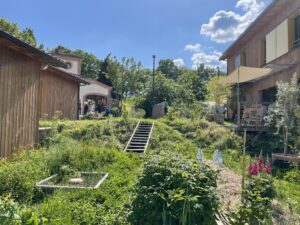
Regenerating Housing
Another example is this year’s Silver winner, La Ciguë. Members of La Ciguë run this housing cooperative for students, founded in 1986 in Geneva, Switzerland. It rents empty flats from private and commercial owners and in turn, offers them to its members at an affordable price.
Over the years the cooperative has also developed its own housing stock (8 buildings with 311 rooms in cluster apartments with large common spaces). These spaces exceed the standard regulations for energy-efficiency and thermal comfort. Around 8,000 students and interns in Geneva currently benefit from La Cigue’s cheaper rents, which are 30%-60% lower than standard rental market rates.
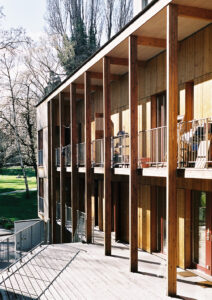
La Ciguë, Geneva, 2024 Silver winner
Myth: “It’s impossible to build with natural materials in dense urban areas.”
World Habitat’s view: Busting this myth is 2023 World Habitat Award silver winner Sostre Civic, responsible for constructing Spain’s tallest building made of wood, the cooperative Cirerers, in Barcelona. Sostre Cívic’s model is based on environmental sustainability, along with permanent affordability and community participation and management. All of Sostre Civic’s cooperative buildings satisfy the near-zero emissions standard (nZEB building) through excellent design, insulation, ventilation, and the use of renewable energy. The building also consumes 50% less water than conventional buildings, by recycling grey water for toilets and washing machines, and collecting rainwater for irrigation of green areas.
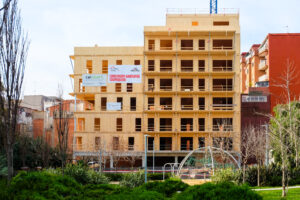
Sostre Civic, Barcelona, 2023 Silver winner.
Myth: “It is more environmentally friendly to level and build new, than retrofit old buildings.”
World Habitat’s view: Whilst building from scratch with new materials and cutting-edge techniques may be more environmentally friendly than it used to be, demolishing old buildings creates waste – tons of concrete, metal, plastic, glass, and other materials. Old buildings also have ‘embodied carbon’ (the carbon emissions associated with creating them in the first place).
However, retrofitting conserves embodied carbon, prolonging a building’s life expectancy and increasing energy efficiency at the same time. Our 2024 Gold Award winner Eneregiesprong works with social housing providers on net-zero retrofits, upgrading existing buildings to make them more sustainable and energy efficient. It collaborates with clients to find ways to finance the retrofits and its efficient fitting methods reduce costs, increase affordability and minimise disruption for tenants.
Retrofitting also offers opportunities to reconfigure spaces and increase accessibility for people with reduced mobility. This was the approach taken by 2024 Bronze Award winner 1892 e.VG, an affordable cooperative housing provider with over 6000 homes in Berlin, including the Nettlebleckplatz housing block built in the 1970s. This retrofitting project was financed through a combination of investment by cooperative members, equity, public subsidies and a loan to the housing provider.
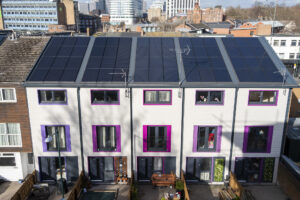
Energiesprong, 2024 Gold winner
A powerful environmentally friendly housing network
These are just a handful of examples of outstanding eco-friendly building projects, recognised by the World Habitat Awards in recent years. As winners, all of these projects participate in the World Habitat Awards Network, a space to exchange good practices with the other former winners of the competition. The network directly contributes to disseminating good practices worldwide and helps to dispel myths and misconceptions about environmentally responsible construction.
We know there are more eco-housing projects out there that deserve recognition and could inspire others. Our mission is to find, award, support and transfer them to new territories and contexts. Collectively, we can promote better housing for people and the planet.
Do you want to find out more about the 2024 World Habitat Award winners? Watch the recording of the 2024 World Habitat Awards Winners celebration event that took place on 22 February 2024, over on our YouTube Channel.
Contact us

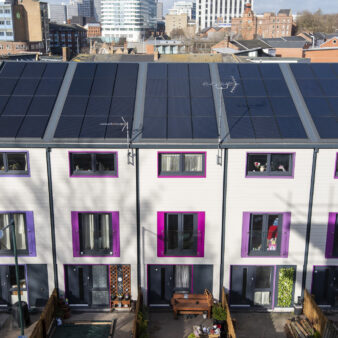
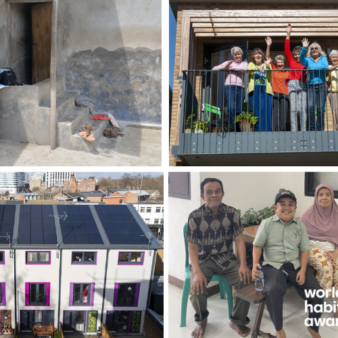
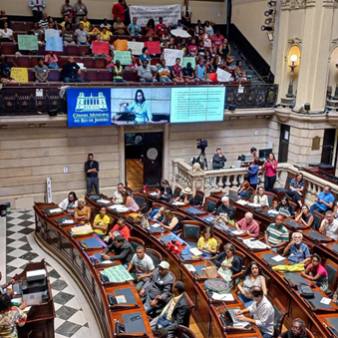
Join the discussion